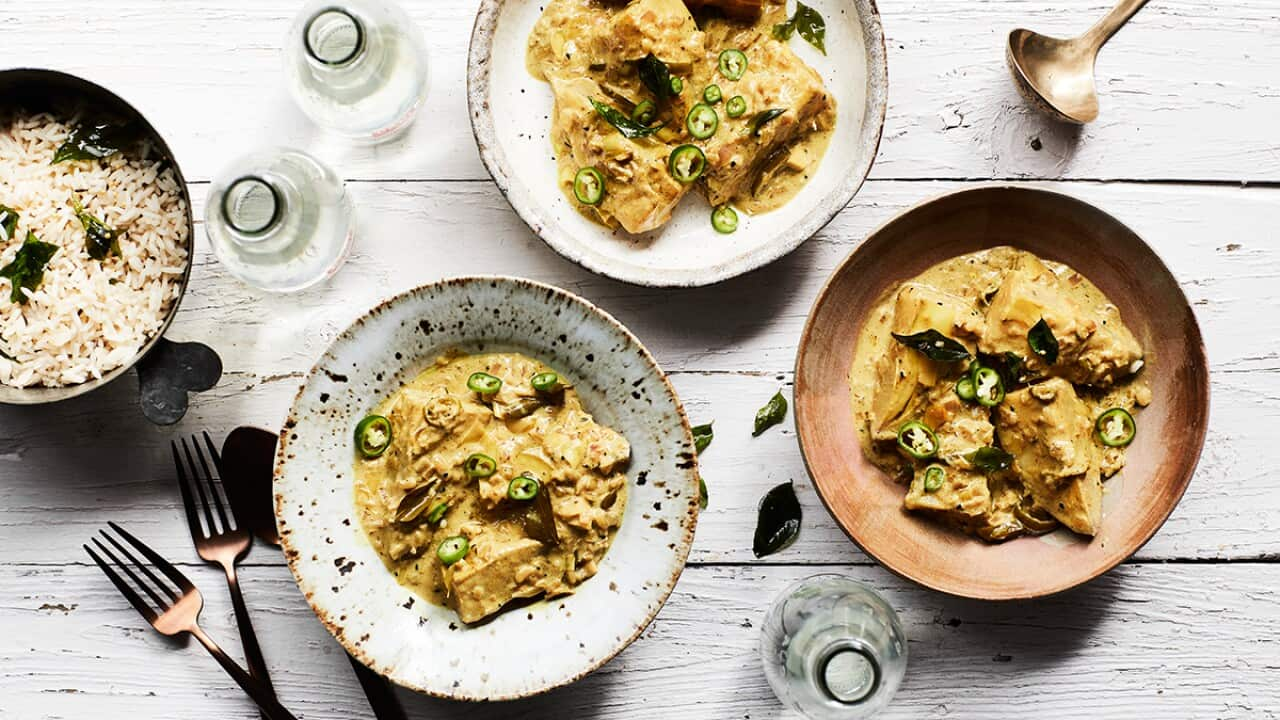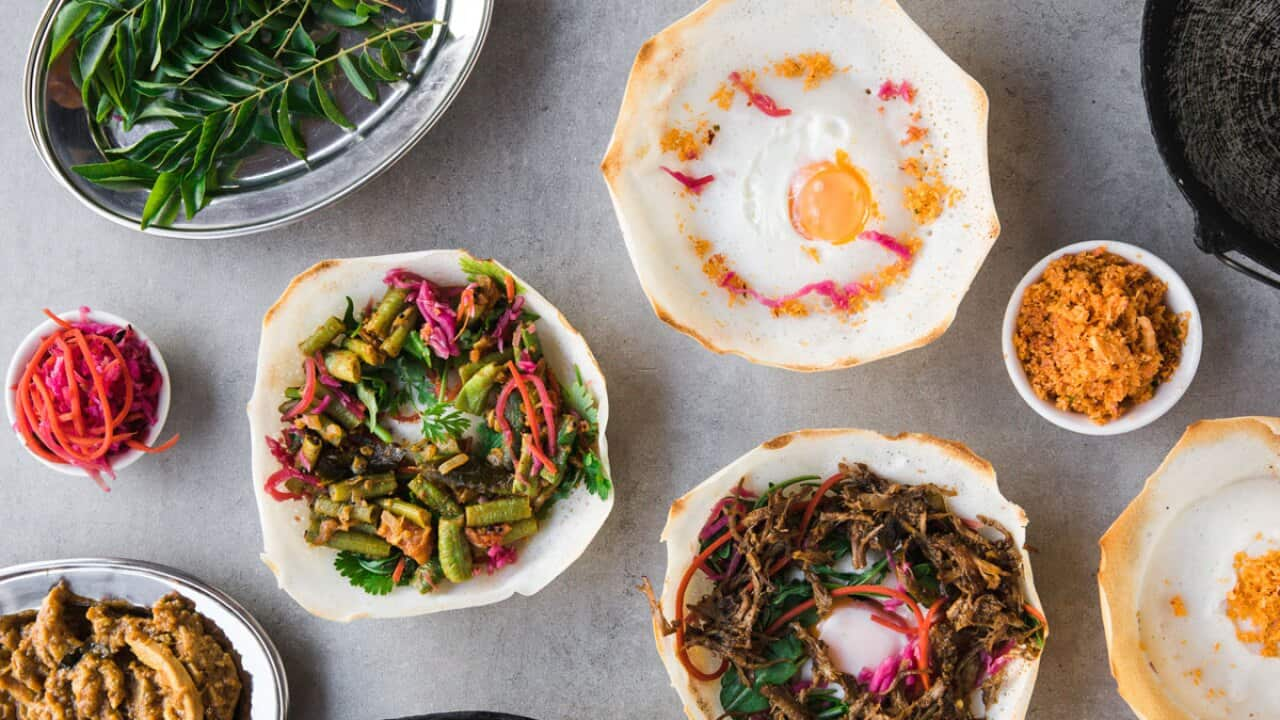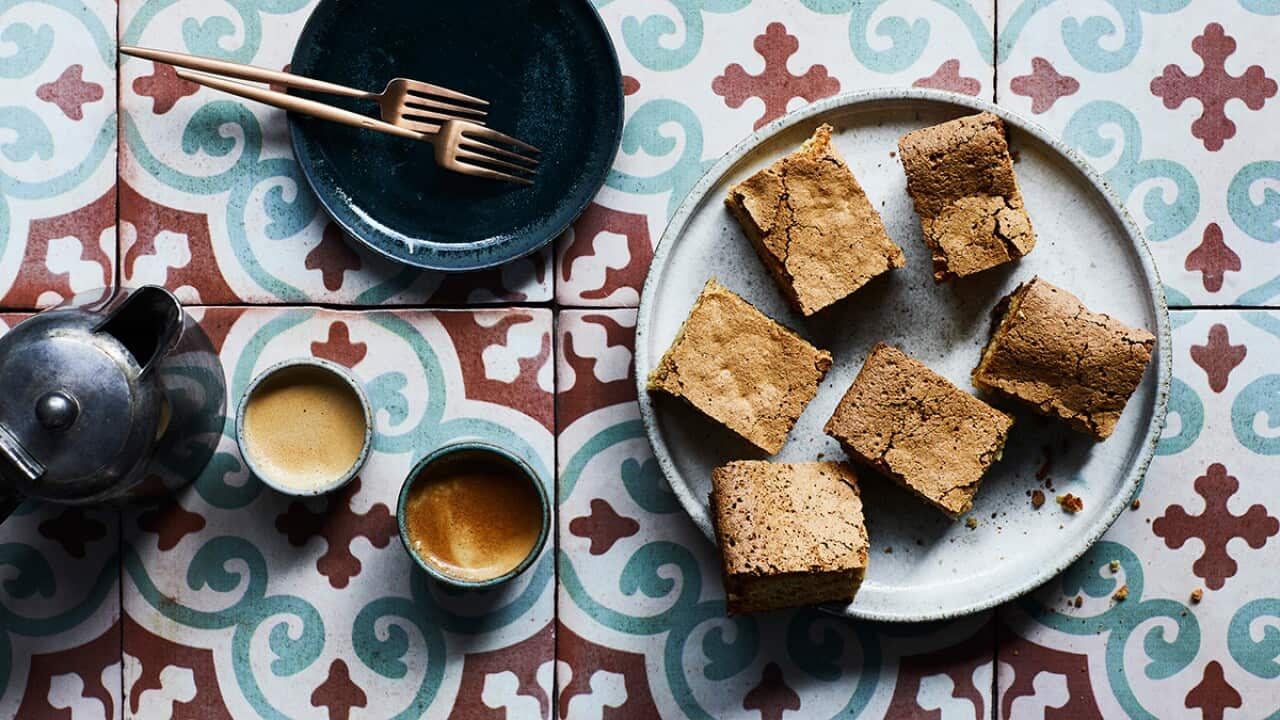remembers the first time she made batter. “It was pretty bad,” she says. “Never in my cooking career have I done anything that was so fraught with danger and disaster.” Despite honing her recipe for many years, is still surprised by how temperamental the Sri Lankan bowl-shaped pancakes can be.
In fact, she had a hopper fail not that long ago, on Mother’s Day, while attempting an experimental batch for her family.
“I was like, my God, what’s wrong with me, why am I about to open a hopper restaurant?”
In fact, she’s launching , her all-day hopper eatery, on Wednesday 25 July. It’s the permanent version of the at until last September – and her first full-time venture since , back in 2014. But don’t worry, her hopper-making success rate is pretty much certified when she sticks to making the dish for big crowds of diners. It’s only when she tweaks it for a small-scale, family setting that things truly go wrong. (Takeaway lesson from the Mother’s Day disaster: the coconut-and-rice-flour batter simply fermented far too fast and collapsed. But the same thing can happen when it hasn’t fermented enough – and if you’re not careful, a change in temperature or flour type can also throw everything off-axis, too. As Carey says, “it is fraught.”)
But don’t worry, her hopper-making success rate is pretty much certified when she sticks to making the dish for big crowds of diners. It’s only when she tweaks it for a small-scale, family setting that things truly go wrong. (Takeaway lesson from the Mother’s Day disaster: the coconut-and-rice-flour batter simply fermented far too fast and collapsed. But the same thing can happen when it hasn’t fermented enough – and if you’re not careful, a change in temperature or flour type can also throw everything off-axis, too. As Carey says, “it is fraught.”)

Lankan Filling Station will be open for breakfast on weekends. Source: Benito Martin

Meant for eating with your hands: string hoppers with a gentle milk curry, kiri hodi. Source: Benito Martin
“At the markets, we did hoppers with curry on the inside. That’s not traditionally how you eat hoppers at all,” she says. So what’s the proper way, then? Well, think of your order as all-in-one disposable cutlery and tableware. “You have a hopper and you use that to tear and scoop up your curries and ,” she says. But don’t quickly blitz through five hoppers in one go. The experience should be about concentrating on the moment (and concentrating the mess). “You order one or two and then you eat another one and if you’re greedy, you order another one,” she says. It’s meant to be a well-paced progression. “And if you’re like me, you keep ordering until you get full.”
But don’t quickly blitz through five hoppers in one go. The experience should be about concentrating on the moment (and concentrating the mess). “You order one or two and then you eat another one and if you’re greedy, you order another one,” she says. It’s meant to be a well-paced progression. “And if you’re like me, you keep ordering until you get full.”

Curries and sambols come with a chilli rating from one to five. Source: Benito Martin
And it’s not all about hoppers. There’s a Bombay-inspired snack mix that channels Carey’s days at Italian restaurant Berta; crab cutlets spiced with green chilli and curry powder; and pan rolls, as her grandmother calls them, which are crepe-wrapped spring rolls that are filled with beef or potato and fried. Plus, there’s , a classic Sri Lankan dish that’s mainly seen in Colombo. The cuttlefish is coated in turmeric batter, fried, then cooked further with butter, garlic and an alarm-bell-requiring level of chilli. “It’s really chilli-hot,” the chef says. While she has tried to “balance” the so it’s not simply a mouth-burning danger zone, she says, “there’s definitely a lot of spicy heat going on”. Carey jokes that she hasn’t “dumbed it down for whities”.
Plus, there’s , a classic Sri Lankan dish that’s mainly seen in Colombo. The cuttlefish is coated in turmeric batter, fried, then cooked further with butter, garlic and an alarm-bell-requiring level of chilli. “It’s really chilli-hot,” the chef says. While she has tried to “balance” the so it’s not simply a mouth-burning danger zone, she says, “there’s definitely a lot of spicy heat going on”. Carey jokes that she hasn’t “dumbed it down for whities”.

On the menu: beef pan rolls with fermented chilli sauce. Source: Benito Martin
Lankan Filling Station will be the “proper version” of the market stall she ran for nearly two years – with an expanded hopper section, a range of curries and lots of sides and snacks on offer.
So the sambol selection includes a katta that comes with a five-chilli warning rating. But it’s worth persisting: the condiment is one of Carey’s favourites. A step down on the mouth-blazing scale are the whey-soaked chillies that are fried like pappadums (“so they’re hot and sour and crunchy”), while a green coconut sambol – a vegetarian coconut, ginger and coriander mix that’s more South Indian in style – is a hopper-boosting accompaniment that’s less likely to incinerate your tastebuds. The curry menu is also organised by chilli ratings, too, from the entry-level warmth of the , described as a “gentle coconut milk gravy”, all the way up to the red-curry blast of the tamarind-sour prawn and chicken-tomato dishes.
The curry menu is also organised by chilli ratings, too, from the entry-level warmth of the , described as a “gentle coconut milk gravy”, all the way up to the red-curry blast of the tamarind-sour prawn and chicken-tomato dishes.

The arsenal of spices at Lankan Filling Station. (Benito Martin) Source: Benito Martin
For cool relief, there are traditional drinks, such as toddy (palm wine). Carey visited the old family-run distillery in Colombo, which is run on . Yet tradition still shapes how they make the arrack. “The toddy tappers still go out every morning and climb up the trees in their sarongs to ,” she says. And while there’s also a short list of spice-friendly wines, cocktails and sake, don’t miss the tamarind iced tea and the incredibly pink faluda.
“My mother would always tell me about it while growing up – having the faluda was the special treat. And I’d never have one, because she’d describe it to me and I’d be like, ‘that is gross’. Last time I was in Sri Lanka, I went hunting one out and I found this family shop that had been making it for years.” And how was it? Far from gross and “pretty delicious”, actually. (Mums have a frustrating way of being right.) This encounter has inspired Carey’s version, which is a distinctive mix of rose-syrup, milk, ice-cream, semolina noodles and basil seeds. The love cake from Lankan Filling Station’s market days makes a return here, while the dessert menu also includes baked jaggery custard, buffalo curd with palm treacle and other good things you can scoop (like coconut sorbet, ginger and turmeric gelato, and spiced jaggery gelato).
The love cake from Lankan Filling Station’s market days makes a return here, while the dessert menu also includes baked jaggery custard, buffalo curd with palm treacle and other good things you can scoop (like coconut sorbet, ginger and turmeric gelato, and spiced jaggery gelato).

The very pink faluda helps with the heat. Source: Benito Martin
And despite some disastrous past experiments, Carey plans to keep playing around with her hopper batter – the chef even aspires to make it more like sourdough. “In Sri Lanka, I’ve seen one woman make amazing hoppers and that’s what she did – she just put a bit of her batter into next day’s batter, so it’s more of a natural ferment. But I haven’t had a chance to do that, because you need to make hoppers every day to do that.” Now, with Lankan Filling Station opening, she finally has the opportunity.
Ground Floor, 58 Riley Street, East Sydney, NSW
Tues – Fri 12pm – 10pm
Sat 10am – 10pm
Sun 10am - 4pm







